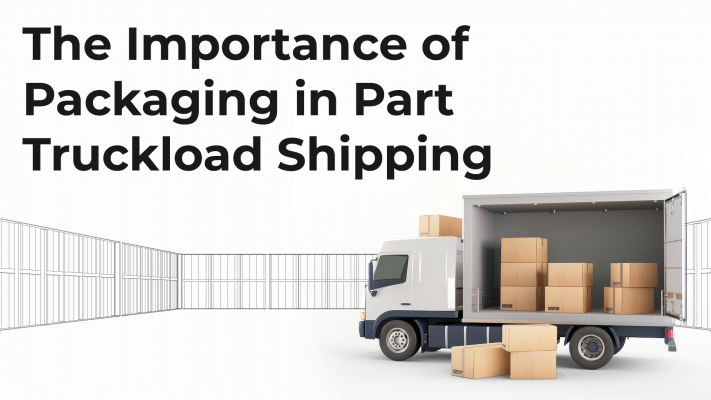Planning Pays Off: 5 Strategies to Get the Most Out of Your Delivery Speed Choice
August 28, 2024
6 min read
Introduction
As the prevalence of online shopping has skyrocketed over the past few years, so has the need for fast and dependable delivery.
Customers now expect their shipments to arrive quicker than ever, usually within hours of placing them.
This is where bike courier services come into the picture. They provide an agile, effective alternative to standard delivery techniques, especially in congested urban locations where every second counts.
Furthermore, according to a report, bike couriers now manage about 25% of all metropolitan deliveries—a surprising increase from just 10% a few years ago. These statistics emphasize the growing dependence on bike couriers to navigate the intricacies of modern urban life, demonstrating that sometimes the easiest solutions are the most effective.
So, what makes bike couriers such a game-changer in the delivery world? Let’s explore how these bike deliveries transform the last-mile delivery landscape.

Efficiency in Action: The Prominence of Bike Couriers
The last step in the bike parcel service process, known as last-mile delivery, has always been difficult and expensive. Bike couriers have become a popular solution to this problem because they are fast, flexible, and good for the environment.
The efficiency of bike couriers is evident in various aspects of urban logistics:
Speed and Agility
Compared to many other methods, bikes are much faster, particularly in busy cities. They can bypass traffic easily and reach places where bigger vehicles would take longer or even get stuck, thus enabling timely delivery service completion by courier ridership.
Studies reveal that hyperlocal deliveries via bike couriers are 60% quicker than traditional methods used for same-day deliveries.
Cost-Effectiveness
While the initial setup for a bike courier service might include purchasing bikes and equipment, the long-term operational costs are relatively low compared to motorized vehicles. There’s no need for fuel, and maintenance costs are minimal. This cost-effectiveness translates into savings for businesses and consumers alike.
Flexibility
Bike couriers are highly adaptable. They can handle all sorts of different deliveries—from small packages to important documents that need to be somewhere as soon as possible. This means businesses can offer many types of delivery, like same-day or express services, which makes people happy.
Reduced Traffic Congestion
By choosing bikes over motor vehicles, delivery services contribute to reducing traffic congestion. Fewer delivery vans on the road mean less gridlock and a smoother flow of traffic, benefiting everyone on the road.
Enhanced Customer Experience
The personal touch of a bike courier can also enhance the customer experience. Couriers often have more direct interactions with customers compared to impersonal delivery vans. This can lead to higher satisfaction and a stronger brand connection.
The Future of Bike Couriers
The future of bike couriers looks promising as technology and urban planning evolve. Here’s how the industry might continue to grow and adapt:
Technology Integration
Technological advancements will improve bike messenger efficiency. Some such advances may include GPS tracking, route optimization software, or real-time data analytics, which would help couriers plan their trips better and react faster to changes en route.
Expansion of Services
Bike couriers are likely to expand their services beyond traditional parcel delivery. For instance, cargo bikes could be used for larger deliveries, while partnerships between local businesses and courier companies may facilitate the provision of on-demand services.
Integration with Public Transport
In the future, public transportation systems might collaborate with urban logistics involving bike couriers. For instance, transit hubs could serve as starting points for last-mile delivery by bicycle, thereby further reducing the need for motor vehicles.
Conclusion
To sum up, bike couriers have lately emerged as vital players in the urban logistics domain. Their effective on-time deliveries, reduced ecological impact, and improved client satisfaction have made them a key aspect of modern delivery systems.
Furthermore, as cities continue to grow at a fast pace, hyperlocal delivery with bike couriers will likely play an even more substantial role in transforming the future of urban transport.
Get ready to revolutionize your last-mile delivery with unbeatable efficiency with Shipyaari. We offer innovative logistics solutions designed to harness the power of bike couriers for faster, greener, and more.
Try it for free to elevate your delivery game—because when it comes to delivering excellence, every mile counts!
Frequently Asked Questions
Bike couriers are essentially professionals who deliver packages using bikes as their mode of transportation within cities or towns. They are fast at moving through traffic.
They can ride between cars and access narrow lanes, which makes them quicker than vans used for traditional forms of delivery, especially when there is traffic congestion. Additionally, they offer same-day service delivery faster.
Bike couriers face safety challenges but are equipped with safety gear like helmets, reflective vests, and lights. They also receive training on how to navigate traffic safely.
Bike couriers have lower operational costs compared to motor vehicles, including savings on fuel and maintenance. This can result in more affordable delivery services for both businesses and consumers.
Suggested Reads
Hyperlocal Personalization: Tailoring Experiences for Local Customers
Introduction The eCommerce industry in India has witnessed a rapid growth of hyperlocal services in
Continue ReadingDec


















 Shipping
Shipping







